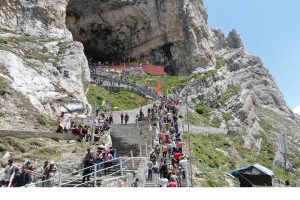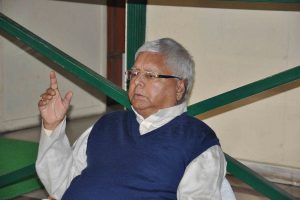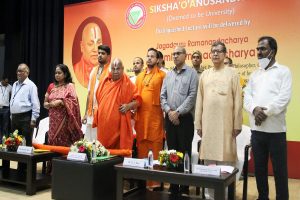Do you remember when you last saw a vulture in Delhi? Try to think hard and you will realise that you have not seen these magnificent birds of prey since a long time. Changes in air, water and the environment have largely affected the population dynamics of several animal and bird species on our planet. Some these birds and animal, which were so commonly found, are now on the verge of extinction. For instance, some of the vulture species, especially from the Gyps genus, have disappeared due to several reasons, including the indiscriminate use of Diclofinac, a cattle pain killer drug. With vultures hardly seen now, environmentalists have given an urgent call to think of a possible way to get them back.
Vibhu Prakash and Nikita Prakash have spent more than 15 years of sustained research and rehabilitation work through the vulture conservation breeding programmein India. Recently they were conferred with RBS “Save the Species” Award under the RBS Earth Heroes Awards 2016. RBS (Royal Bank of Scotland) has institutionalised the RBS “Earth Heroes” Awards from 2011, giving them away annually. The Awards are an attempt to bring recognition and honour to individuals and institutions that work exceptionally hard to preserve and protect our critical ecosystems. The awards have been an effective platform for recipients to display their work to a larger audience and potentially expand the scope of their work from the recognition and networking that accrue.
Saving vultures
After a brief study by Vibhu Prakash on the plight of vultures in India, he came to the conclusion that the population of these birds was decreasing at an alarming rate. In the year 2001 the vulture programme was started, with its first centre in Pinjore, Haryana. The scientists at the centre carefully looked after the hatching process of the vultures. Artificial incubation and double clutching was initiated from 2009 to increase the productivity in the slow breeding and long-living birds. Normally, these species lay only one egg per year but they tend to lay again if the first egg is removed within a couple of weeks. Taking advantage of this, the first egg is removed and artificially incubated and the second egg is incubated by the parents. After the hatching of the egg, the people at the centre interact very little with the birds. The centre has projection facilities and also has CCTV camera monitors fixed in the bird enclosures. The CCTV has proved to be a very good tool to observe vultures in the enclosures without disturbing them. A mimicked natural condition is created for the birds to live. They are kept at the centre to make it sure that Diclofenac is removed from their body system. Once this is done, they are free.
Rogue drug
Thinking about the centres for vultures in the early days was very uncommon but the sad state of these birds resulted in building the centres to save the species. After looking at the poor conditions of these vultures scientists felt an urgent need to look for the reasons behind their sudden death. The drug, called veterinary Diclofenac, is an anti-inflammatory given to livestock to keep away a number of diseases. The birds would consume the dead cattle and ingest the drug. In vultures Diclofenac quickly attacked and shut down their kidney function, leading to a rapid death.
There are three trophic levels in the food chain. If any of the levels is left incomplete the food chain will not be completed. Vultures lie in the third level, that is the scavengers that eat both plants and animals. Without vultures the process cannot be completed. So, to maintain the food chain and save this species all segments of society need to work together. Since vultures play a vital role in keeping the environment clean, scientists advocate that their numbers should be increased.
Vultures provide a crucial ecosystem service through the disposal of livestock carcasses and their loss has had huge socio-economic impacts across the Indian subcontinent. Without vultures, hundreds of thousands of animal carcasses have gone uneaten Rs left to rot in the sun, these pose a serious risk to human health. Livestock carcasses provide a potential breeding ground for numerous infectious diseases, including anthrax, and encourage the proliferation of pest species, such as rats.
Most worryingly, the loss of vultures has resulted in an increase in the number of feral dogs around carcass dumps Rs the bites of which are the most common cause of human rabies in the region. A recent study in India estimates that, concurrent with the vulture die-off, there has been an increase in the feral dog population of at least 5.5 million. It is calculated that this has resulted in over 38.5 million additional dog bites and more than 47,300 extra deaths from rabies. The researchers believe that the increased number of rabies victims may have cost the Indian economy 34 billion dollars.
By Komal Prasad
Advertisement







